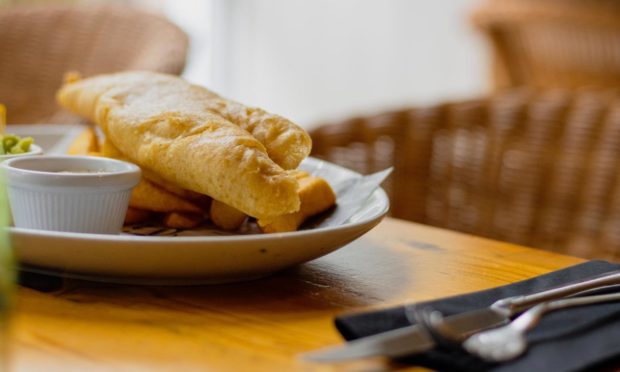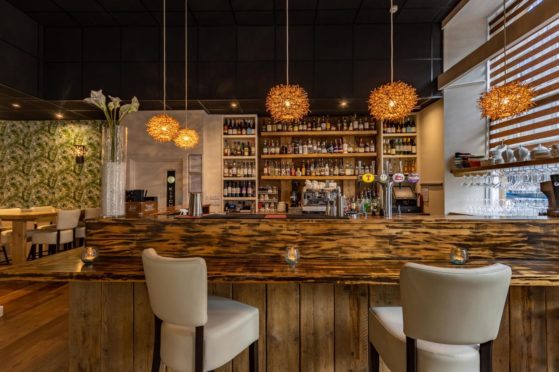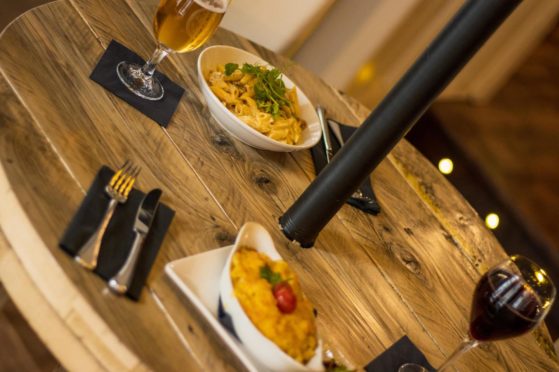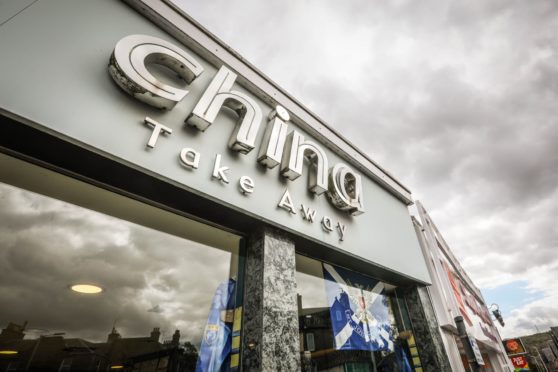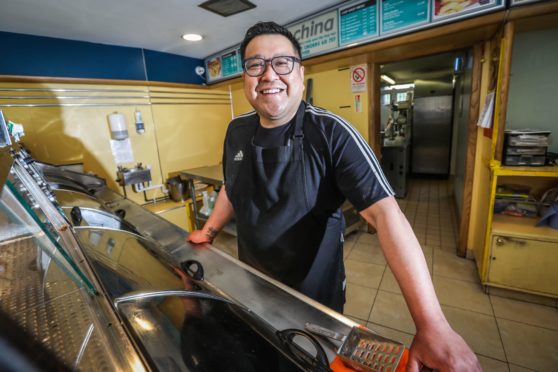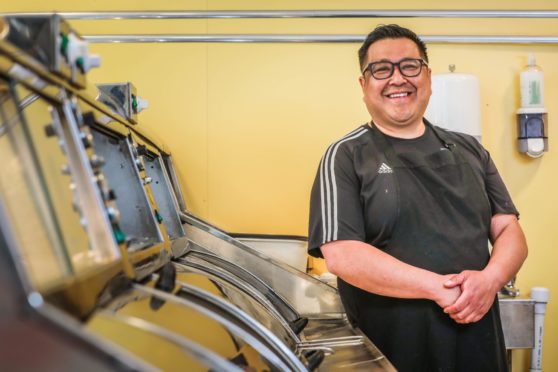With Coeliac Awareness Week (May 10-16) well under way, we take a look at some of the food and drink businesses that go that extra mile to cater for those who can’t eat gluten.
After being diagnosed with coeliac disease, one of the first challenges people face is often finding somewhere they can eat.
As the disease means the body’s immune system attacks its own tissue when it tries to digest gluten, those who suffer from it cannot eat food containing barley, wheat and some oats. If they do, then often they will experience adverse symptoms such as nausea, bloatedness and sometimes damage to their stomach lining.
For businesses who provide gluten-free food must ensure it does not come into contact with anything which has gluten in it, as cross contamination can sometimes cause coeliac disease sufferers to react.
It’s often for this reason that many restaurants, cafes, bars and pubs choose not to offer gluten-free for fear of accidentally causing someone to be “glutened”. But those who suffer from coeliac disease and consider themselves to be foodies in Scotland, aren’t completely at a loss when it comes to local offerings, particularly not if they live in Inverness or Perth.
The White House: Elevated pub fare
In Inverness, a local restaurant is stirring up a lot of attention as being a popular haunt for those in search of gluten-free food.
Head chef Robert Simmons of The White House, has found a gap in the market when it comes to catering for those with coeliac disease and other allergies.
He said: “I’ve been cooking in kitchens for 25 years now and I’ve found that maybe over the last sort of eight to 10 years that people have a lot more allergies.
“I noticed a gap in the market within the local area and that there aren’t a lot of places catering for people with allergies, especially coeliacs. So I just took it from there, really.
“The majority of our menu can be made gluten free, probably about 80-90%. We find it a lot easier to make everything, if we can, wheat and gluten free from scratch.”
Important considerations
As gluten-free food is notoriously much more expensive than its glutinous counterparts, it can sometimes act as a barrier for restaurants when it comes to offering it on their menus, however Robert thinks it’s still an important aspect to consider.
He adds: “The cost of it isn’t that much dearer, you just have to work out your recipes a bit more and refine them, which is pretty straightforward most of the time.
“Over the last three or four years, I’ve introduced a lot more gluten-free food and we’ve also decided to make the menu nut-free and seed-free and we do quite a few dishes that are vegetarian and vegan.
“You can get someone who is just gluten free but you can also get someone who is vegetarian and gluten free, and vegan as well. So, from a restaurant perspective, you’ve got to try and think of all aspects when you’re designing the menus.”
No bread
Incorporating gluten-free food into a restaurant’s menu is much simpler than it seems, says Robert, who is happy to offer alternatives to most of his dishes, so long as they don’t include bread!
He continued: “By far, making a menu gluten free is simpler than people think. The biggest thing is that 10% of your customers on a given day could be gluten free and if you have an option it’s easier. For instance, I don’t give every customer gluten-free pasta but it says on the menu ‘gluten-free options available’.
“I don’t find it hard at all, in any way. The biggest challenge I have is using gluten-free bread. Personally, I’m not keen on it and I think it’s quite heavy and is quite stale. I’ve tried using gluten-free wraps and they’re fine, I don’t find anything different with them at all.
“But I do find it hard when it comes to bread – I don’t like buying it and offering it because the chances are it’s not going to be fresh on the day because I’m going to need to bin what’s left over every day.
“I tend to use alternatives and we prepare it separately from the food containing gluten, so there is low risk of cross contamination. For example, I’ve got a tapas board on the menu and rather than give bread, we offer gluten-free oatcakes and nine times out of 10, customers are more than happy to take it.
“I do think it is difficult for people with allergies and dietary needs to find somewhere to cater for them. But the thing is, the easier it is, the more these people are going to enjoy their night and the more custom you’re going to get from them. It’s all about making the customers happy, at the end of the day.”
China China: gluten-free Chinese cuisine
Meanwhile in Perthshire, Pete Chan, owner of China China takeaway on St Leonards Bridge in Perth, has a large coeliac fanbase for his gluten-free Chinese food, with those who can only eat gluten free travelling, sometimes for hundreds of miles, to sample it.
He said: “There was a lady who travelled up from Dartmouth last weekend, a 600-mile trip, to have a holiday built around coming to China China. She is a coeliac vegan and struggled to find things she could eat up and down the country. She’d read about us doing gluten-free Chinese food and felt she had to come, so I cooked her four dishes to take away.
“Really, I just gave them to her because she came that far. After I’d cooked each dish, before putting them into the container, I asked her to taste each one. By the time I got to the third dish she was in tears – she just couldn’t believe there was so much available.
“I cooked her a garlic and chilli tofu, a vegetable chow mein, rice noodles and a Singapore chow mein. There’s so much variety we can still play with in Chinese food.
“We also have one chap who comes from Wick regularly. He buys three chicken curries – two to take back home and he eats one here. It’s just remarkable!”
“I’m not accredited and I haven’t gone down the official channels as I believe there’s too much paperwork at the end of the day. But by the same token, I haven’t managed to ‘gluten’ anybody.”
Naturally gluten free
When it comes to Chinese food, Pete says the cuisine lends itself to being gluten free quite naturally.
He added: “I think with a lot of restaurant food culture, a lot of it is focused around bread, pies and gravies. For us, where my family are from, in Southern China, everything’s more or less rice-based. So there’s a lot we can play with and I don’t find it a problem.
“Where I profited is that I’ve used Chinese cooking methods but have brought in Western chemistry and substituting all the flours, for example, for gluten-free flours. To be honest, the crispy chicken comes out more crispy than it does with glutinous flours!
“For curry sauce, if you make a proper recipe, a proper roux will take about five or six hours. But what I do is use the same oils and go down another couple of hours and make a gluten-free one. So, coeliacs and those who are gluten-free are getting the same curry sauce with the same flavours, and almost the same texture as everyone else.
“I’ve had grown adults in tears because they’ve not been able to have a chicken curry in years as curry sauce usually has wheat flour in it. It’s remarkable just seeing them eat it and I get a thrill out of being able to make food for them.”
Chinese cuisine in Scotland
Pete has ensured those who suffer from coeliac disease are well looked after at China China, with around 90% of his menu suitable for them to consume. Though he does worry that Chinese cuisine in Scotland is dying out, meaning that his gluten-free Chinese food isn’t something that will become the norm.
He continued: “When they come to my restaurant they can have 90% of the menu, and they just seem to find that remarkable. Whether it’s noodles, crispy chicken or chilli beef, salt and pepper chicken, they can have it all, there are no restrictions here.
“I don’t think there is a lot of awareness in the restaurant industry as to how easy it is to make food gluten free. There certainly are no new people coming into the trade, you’re not going to get some up and coming Chinese chef coming in because there is nobody.
“So if people aren’t learning about Chinese cuisine then they aren’t going to learn it’s gluten free because they don’t have the basics. We seem to be the only ones trying really hard at it. There are one or two places that also offer gluten-free options, but definitely not as much as we do up in this neck of the woods.”
Frozen meals
As his food gains increasing popularity across the country, Pete is starting to turn his attention to a new idea that will help maximise on his customers’ desires for gluten-free food.
He adds: “I have a goal to make 100% gluten-free frozen Chinese meals as I’ve just turned 50 and I can’t keep cooking on the frontline in a takeaway. I’ve really felt it this past year in lockdown as people haven’t had many choices to go anywhere else other than the takeaways.
“So if I was to make the decision to go into making 100% gluten-free Chinese meals that can be frozen, that would be a winner as well I think. There’s just a great market out there and we’ve got the trust already.”
